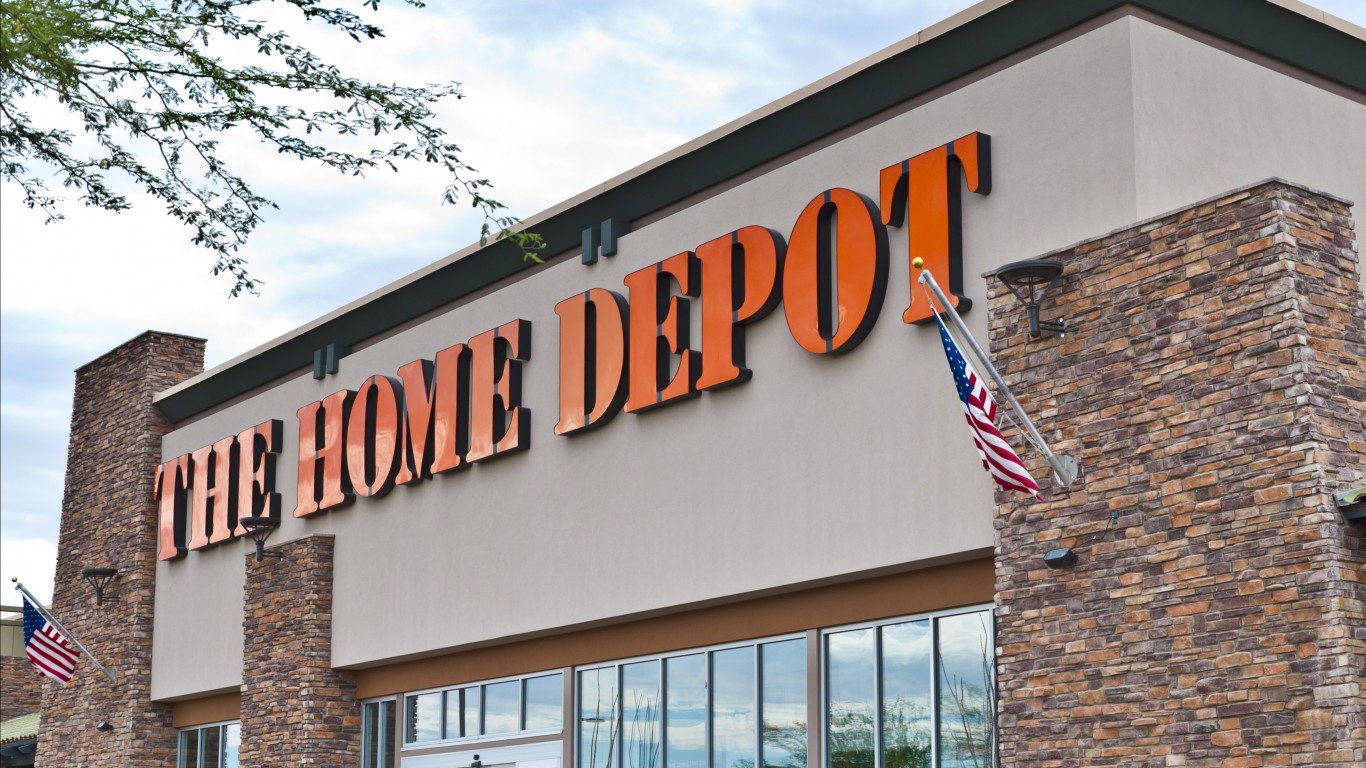Investing
Why Now May Not Be the Time to Buy Home Depot Stock (HD)

Published:
Last Updated:

Over the past year, the consumer discretionary sector, which includes Home Depot Inc. (NYSE: HD), has performed solidly but not overwhelmingly. The sector has added 13.63% to its value, third-best after communication services (up 39.05%) and tech (up 36.49%). Home Depot stock has not contributed to that increase.
One of the country’s largest specialty retailers, Home Depot stock has dropped about 8.5% in the past 12 months, far outpacing the industry’s decline of less than 1%. Home Depot reported third-quarter results Tuesday morning that beat consensus estimates on both the top and bottom lines. At the same time, the company lowered its guidance for its 2023 fiscal year ending in January. (See which 10 things to never buy on Amazon.)

In the press release, CEO Ted Decker commented, “Similar to the second quarter, we saw continued customer engagement with smaller projects, and experienced pressure in certain big-ticket, discretionary categories.”
Customer transactions fell by 2.4% year over year, the average ticket was down by 0.3%, and sales per square foot dropped by 3.7$.
U.S. same-store sales fell by 3.5% year over year and by 3.1% overall.
Net income fell by 12.2% to $3.81 billion. Net margin for the quarter fell from 11.2% last year to 10.1% on a drop of about $1.1 billion in net sales. For the year to date, net margin dropped.
For the first nine months of the fiscal year, net income fell 10.2% and net margin dropped from 11.3% to 10.4%. Cash flow from operations for the year to date is up by 64%, but that includes a decline of $3.4 billion in working capital in 2022. That decline was attributed to “higher merchandise inventories and reduced inventory turnover” among other things. The inventory position last year “reflect[ed] the impact of inflation” along with strategic investments in merchandise and operations.

At the end of October, Home Depot had cash and equivalents totaling $2.7 billion. Cash dividend payments for the year to date total $6.3 billion, an increase of nearly 7.7% year over year.
The upshot of all this is that the dividend may already be too generous. In any event, a 10% increase again this year is unlikely unless Home Depot stock goes on a tear in the fourth quarter. That’s also unlikely because the January quarter is traditionally the company’s weakest.

The company now forecasts a year-over-year decline in diluted EPS of 9% to 11%. Prior guidance called for a decline of 7% to 13%.
Home Depot has narrowed the ranges, but the lower end has declined in each case. Consensus estimates for fourth-quarter revenue and EPS are already lower than the company’s actual numbers for last year.
Expect the consensus to come down a bit as analysts digest Tuesday’s report.
Home Depot stock traded up more than 2% in Tuesday’s premarket session, but the stock pared its gain to less than 1% to trade at $290.42. The 52-week range is $274.26 to $347.25.
The average American spends $17,274 on debit cards a year, and it’s a HUGE mistake. First, debit cards don’t have the same fraud protections as credit cards. Once your money is gone, it’s gone. But more importantly you can actually get something back from this spending every time you swipe.
Issuers are handing out wild bonuses right now. With some you can earn up to 5% back on every purchase. That’s like getting a 5% discount on everything you buy!
Our top pick is kind of hard to imagine. Not only does it pay up to 5% back, it also includes a $200 cash back reward in the first six months, a 0% intro APR, and…. $0 annual fee. It’s quite literally free money for any one that uses a card regularly. Click here to learn more!
Flywheel Publishing has partnered with CardRatings to provide coverage of credit card products. Flywheel Publishing and CardRatings may receive a commission from card issuers.
Thank you for reading! Have some feedback for us?
Contact the 24/7 Wall St. editorial team.